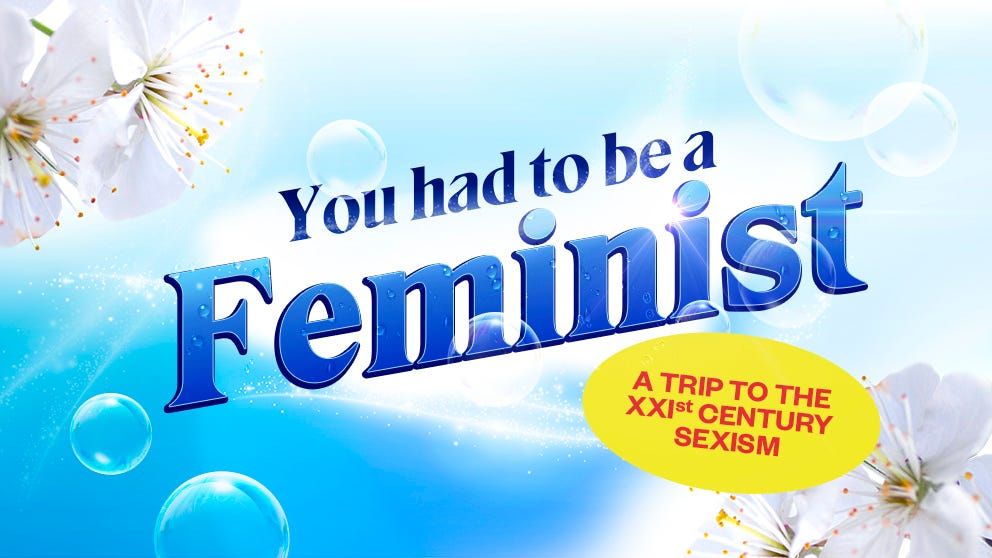
As data gatherers, it’s our role to know when the story is ready to be told — or when it’s happening as we speak. Like in Feminism.
Our studio is an independent creative hub specialized in making conversations. Our clients hire us to create spaces for talking — about anything from politics to trends to human emotion –, which we do by applying the best language tool that was ever invented: questions. We’re out there, in today’s content war, skipping clickbait, arrogant monologues, set bias and fake news and creating questions that can make people think. Then, we turn them into data and use it to amplify the global dialogue. That’s our modus operandi and it works pretty well on difficult topics. But we knew that a debate on feminism wouldn’t be an ordinary debate.
You see, the thing about data is that it is a form of power. So when it comes to feminism, we need to be twice as careful. As brilliantly put by Catherine D’Ignazio on the much-recommended book Data Feminism (MIT Press), “It is essential to ask: Data science by whom? Data science for whom? Data science with whose interests in mind?”. That was our first thought, followed by the knowing that feminism is a major social movement with different histories. Feminists don’t always agree with each other, and oppression sometimes takes place inside the movement. In this context, how can we choose the right data to show?
So, while starting with the initial research phase, we’ve decided to open this challenge and published a initial online survey looking for insights on how to approach the subject for wider audiences. The result was not a clarifying data set — neither was this the goal — but an honest source of new, burning questions to enrich our data narrative. Put it in simpler words, our questions took us to better questions.
Here are the main moments:
1. The survey
We prepared an informal Typeform and sent it to our mailing list — a web corner filled with people with a crush on data. The survey gathered almost 200 responses and the first insight came right through: while our audience is 60% male and 40% female (the mailing list’s socio demo is still binary), 70% of the answers came from women. Apparently, talking about feminism isn’t a priority for guys.
The second insight was quite an impressive one. Even though the majority of the female participants answered to consider themselves feminist, the answers split in two when it comes to how they’d respond to a sexist attack: while part would step up and say something, nearly half of the group would choose to ignore. For the same question, a big amount of guys would choose to laugh along. Is that the sound of dots being connected?
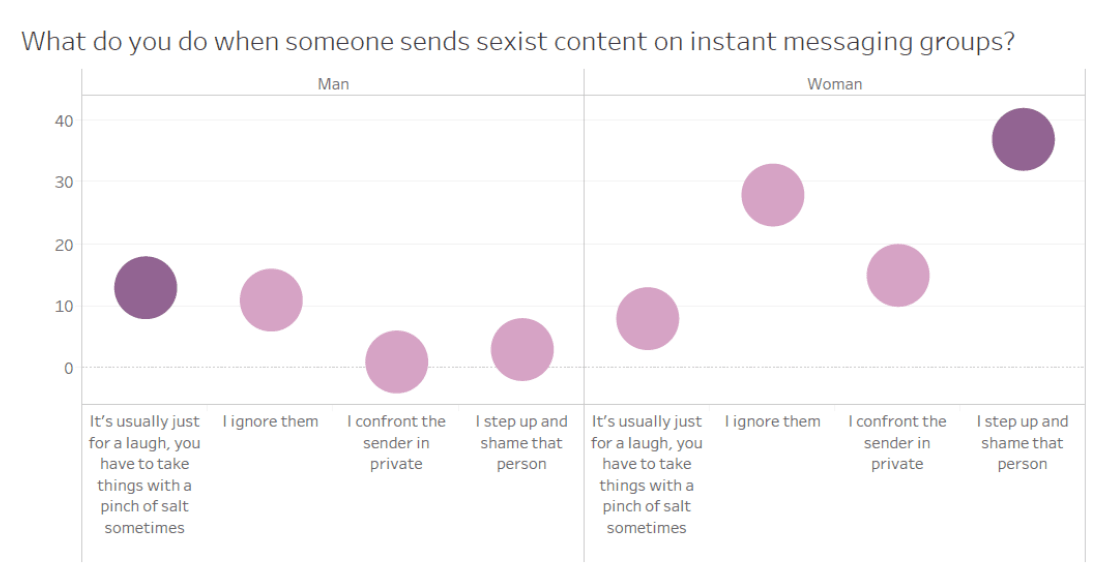
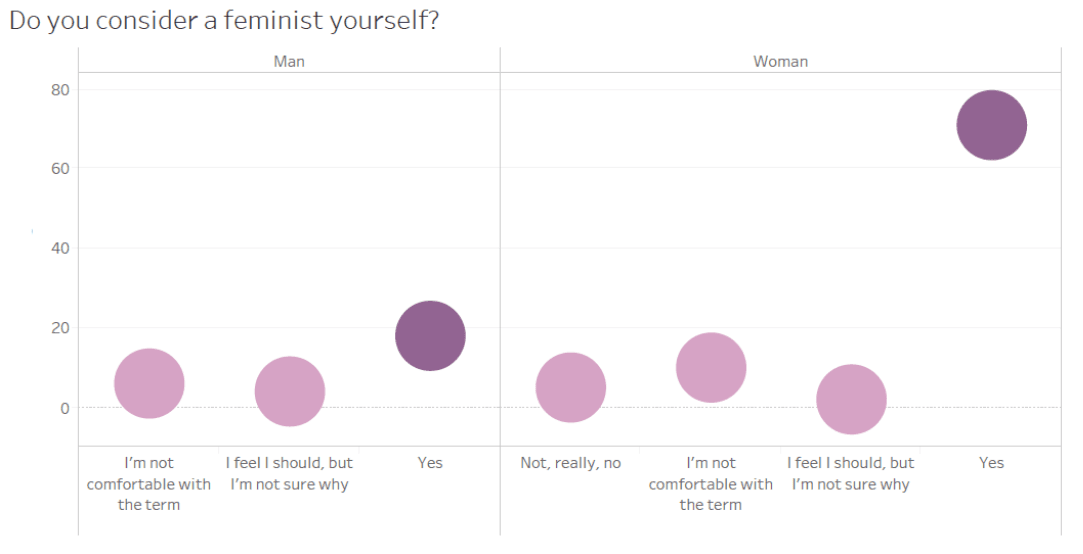
Spin-off Questions:
- Is the “I ignore” said by women a choice or a mechanism of defense? If so, what is it defending them from?
- What is the male interpretation of the term “Sexism”?
- What explains passive responses to sexism from those who claim to be feminists?
2. The “I am not surprised” moment
We also asked people to tell us the last time they witnessed sexism. While female numbers went high on the “This week” option, male answers kept running on very low levels.
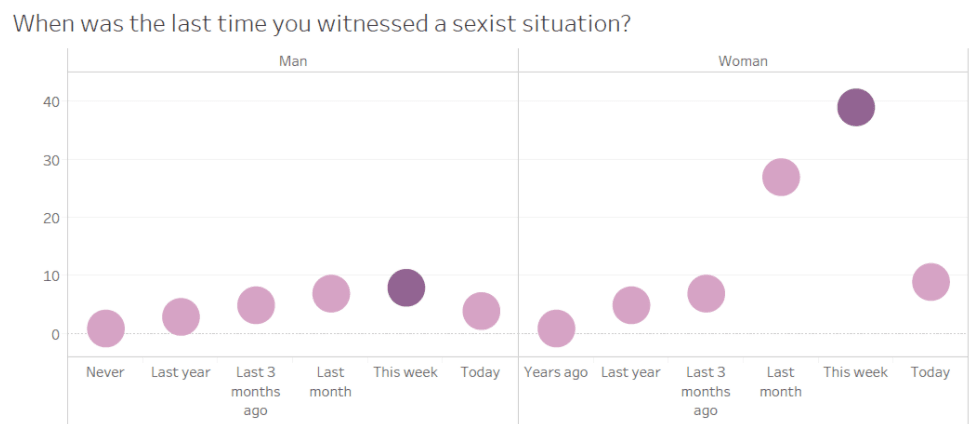
Spin-off Questions:
- Is the definition of sexism the same for both women and men?
- How realistic is it to expect the eradication of sexism when society might not agree on what it is?
- What is the role of data in this?
3. Future expectancies
The WOW award of this survey goes to our “expectancy on equality” question:
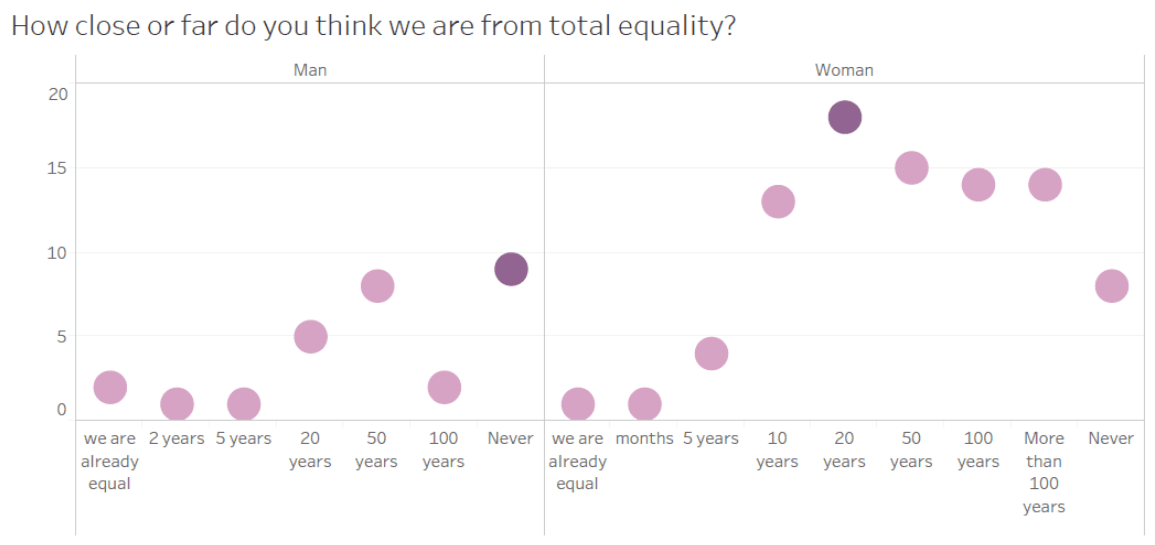
It took us a long time to get our heads around this section. First, it got us wondering the reasons why many people think we’d never reach total quality. But more than that, it surprised us to see how many women believe that total equality is coming in 20 years. According to the Economic World Forum, at current rates of change, women won’t get equal pay until 2277 — or 257 years from now. And the number only gets higher as we have access to new data from the less “watched” regions of the world. “None of us will see gender parity in our lifetimes, and nor likely will many of our children,” the EWF researchers wrote.
Spin-off Questions:
- How can humans fight together against something we experience, describe, and feel in such different ways?
- How much certainty in the future do we need in order to make a change?
- Would it help to make the advancements more visible to society? How can data help to do that?
4. Using questions to move the conversation forward
Our collection of spin-off insights showed us that the most meaningful conversations — in this case specifically — circled around the meaning of the terms we are holding.
If we don’t share the same understanding of the significance of feminism, sexism and justice, we won’t be able to share the same fight.
Feminism is a movement in progress. New voices, opinions and data rise everyday, provoking a change in the context and in people’s mindsets. When this happens, even more important than getting conclusions can be to prepare a second set of questions. And a third. As many as it takes to advance the debate. Oh, and if you find yourself thinking about feminism, ask questions to the women around you, and then listen. Let the questions drive your way. You won’t regret it.
We are now in the production phase of the exhibition “You Had to be a Feminist” in Barcelona, and waiting for COVID-19 to allow it to happen. Follow us on Instagram to learn about opening dates.